Experimental shrimp diet with low levels of vegetable protein and lipids produced acceptable results
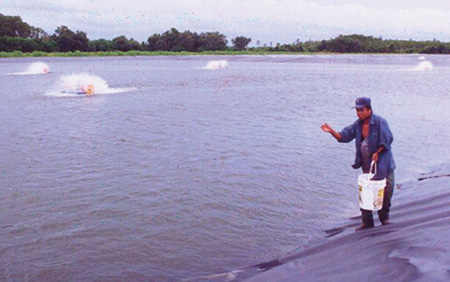
Most aquafeed manufacturers use expensive squid meal, fishmeal, and marine fish oils to meet protein requirements in their products. However, recent research has shown that vegetable and terrestrial animal proteins and oils could be used to successfully replace marine proteins and oils in feeds for many aquatic species, including penaeid shrimp.
Feed study
In late 2001, the authors conducted a 69-day grow-out trial in outdoor ponds at the OceanBoy Farms facility in Labelle, Florida, USA to compare the performance of various aquafeeds. OceanBoy is engaged in applied research to increase protein levels from vegetable sources in its shrimp feeds.
The diets were tested at varying stocking densities, ranging 33 to 138 shrimp per square meter. Animals used in the study were first reared for 21 days in a greenhouse nursery system and then moved to 12 outdoor, 1-ha, plastic-lined ponds with strong aeration and zero water exchange.
Water quality
Dissolved oxygen, pH, salinity, and temperature were monitored twice daily. Ammonia, nitrite, and nitrate levels were monitored weekly. All water-quality parameters measured remained within acceptable levels.
Feeds tested
Four diets were used in the study. Table 1 shows proximate analyses of the feeds described below.
- Diet 1: Experimental OceanBoy formulation with low levels of vegetable protein and lipids, and standard vitamin and enzyme input.
- Diet 2: Feed with lipids of vegetable origin and protein from vegetable and marine sources (OceanBoy formulation).
- Diet 3: Formulation provided by Dr. Allen Davis of Auburn University in Auburn, Alabama, USA with poultry meal instead of fishmeal and fish oil for palatability.
- Diet 4: Formulated by Robins McIntosh (formerly with Belize Aquaculture Ltd.), this diet contained medium levels of marine proteins and oils.
McMahon, Proximate analysis of selected feeds, Table 1
| Crude Feed | Moisture | Protein | Crude Fiber | Ash | Crude Fat | Metabolize Energy |
|---|
Crude Feed | Moisture | Protein | Crude Fiber | Ash | Crude Fat | Metabolize Energy |
|---|---|---|---|---|---|---|
| Diet 1 | 9.35 | 22.32 | 2.9 | 6.1 | 6.1 | 1,484 |
| Diet 2 | 8.72 | 27.6 | 1.8 | 6.05 | 8.2 | 1,539 |
| Diet 3 | 8.44 | 33.45 | 2.6 | 7.94 | 10.9 | 1,535 |
| Diet 4 | 9.15 | 33.84 | 1.8 | 8.04 | 10.1 | 1,517 |
Results
Table 2 summarizes survival, growth, feed conversion and stocking density after 69 days of culture. As shown in the table, diet 4 produced the highest mean final weight (10.40 grams), followed by 6.97 grams for diet 3, 6.23 grams for diet 2, and 5.40 grams for diet 1. Diets 3 and 4 produced survival results of about 87 percent, closely followed by diet 2 and then diet 1 at 73 percent. The lowest feed conversion ratio (1.17) was obtained with diet 2.
McMahon, Summary of survival, growth, feed conversion, Table 2
| Feed | Survival (%) | Average Weight (g) | Feed-Conversion Ratio | Stocking Density (animals/m2) |
|---|
Feed | Survival (%) | Average Weight (g) | Feed-Conversion Ratio | Stocking Density (animals/m2) |
|---|---|---|---|---|
| Diet 1 | 60.0 | 5.8 | 5.5 | 33.2 |
| 71.0 | 6.0 | 2.1 | 70.6 | |
| 89.0 | 4.4 | 2.4 | 67.5 | |
| Diet 2 | 85.0 | 5.9 | 1.2 | 106 |
| 83.0 | 6.3 | 1.5 | 84 | |
| 88.0 | 6.5 | 0.8 | 116.5 | |
| Diet 3 | 7.0 | 7.0 | 1.9 | 111.7 |
| 7.6 | 7.6 | 1.9 | 137.8 | |
| 6.3 | 6.3 | 2.1 | 84 | |
| Diet 4 | 12.5 | 12.5 | 3.8 | 99.9 |
| 8.7 | 8.7 | 4.2 | 45.8 | |
| 10.0 | 10.0 | 8.3 | 131.6 |
Conclusion
The study of feed performance showed that an experimental diet with low levels of vegetable protein and lipids, although ranking last in growth and survival among the diets tested, still produced acceptable results. Feed protein requirements can effectively be reduced and vegetable protein sources increased in shrimp feeds.
(Editor’s Note: This article was originally published in the April 2002 print edition of the Global Aquaculture Advocate.)
Now that you've reached the end of the article ...
… please consider supporting GSA’s mission to advance responsible seafood practices through education, advocacy and third-party assurances. The Advocate aims to document the evolution of responsible seafood practices and share the expansive knowledge of our vast network of contributors.
By becoming a Global Seafood Alliance member, you’re ensuring that all of the pre-competitive work we do through member benefits, resources and events can continue. Individual membership costs just $50 a year.
Not a GSA member? Join us.
Authors
-
David Z. McMahon
Nova Southeastern University
Oceanographic Center
8000 North Ocean Drive
Dania, Florida 33004 USA -
Bart Baca, Ph.D.
Nova Southeastern University
Oceanographic Center
8000 North Ocean Drive
Dania, Florida 33004 USA -
Andrew Rogerson, Ph.D.
Nova Southeastern University
Oceanographic Center
8000 North Ocean Drive
Dania, Florida 33004 USA -
Tzachi M. Samocha, Ph.D.
Texas Agricultural Experiment Station
Shrimp Mariculture Research Facility
Corpus Christi, Texas, USA -
John Reguzzoni
OceanBoy Farms, Inc.
Clewiston, Florida, USA
Tagged With
Related Posts
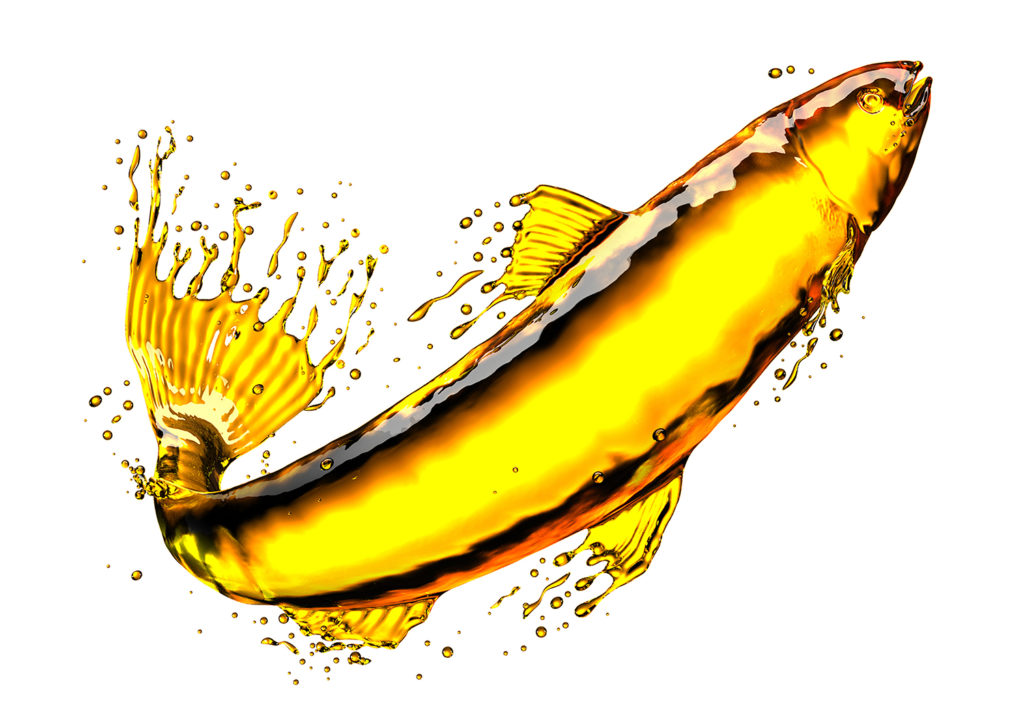
Aquafeeds
Fish oil alternatives are waiting in the wings
The Future of Fish Feed (F3) initiative aims to jumpstart innovation in terms of viable fish-free substitutes to fish oil through the global F3 Fish Oil Challenge.
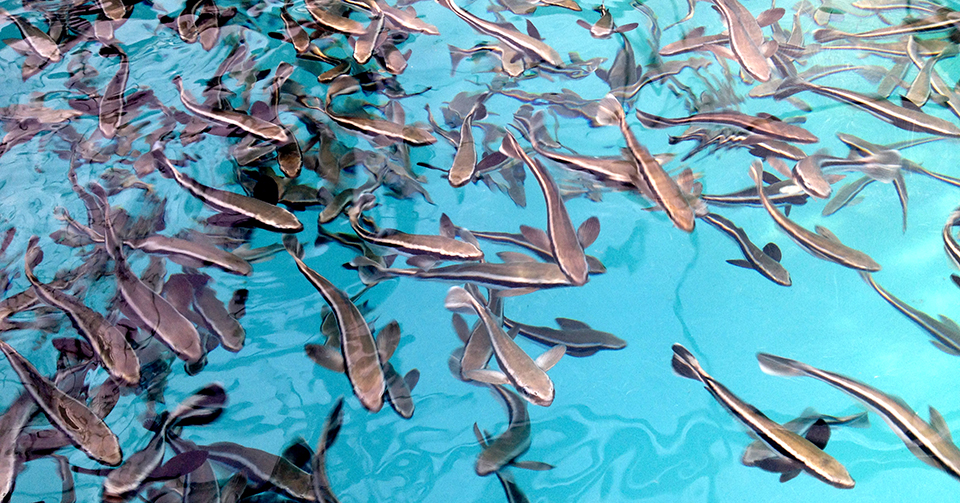
Health & Welfare
Fishmeal replacement in cobia diets reduces costs, improves sustainability
Scientists have been working to understand cobia’s nutritional requirements and advance the economic and environmental sustainability of feeding carnivorous fish using fishmeal alternatives.
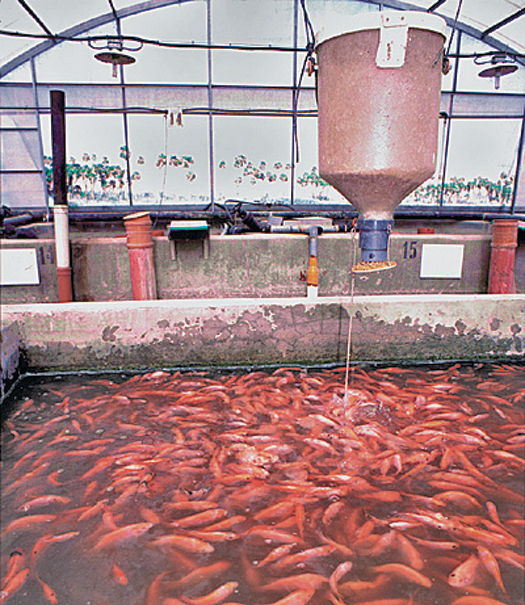
Aquafeeds
Fishmeal-free feeds for hybrid tilapia
A series of experiments showed that fishmeal is not an essential ingredient in hybrid tilapia feeds and that plant protein-based diets can yield results similar to those obtained with diets containing 10 percent fishmeal.
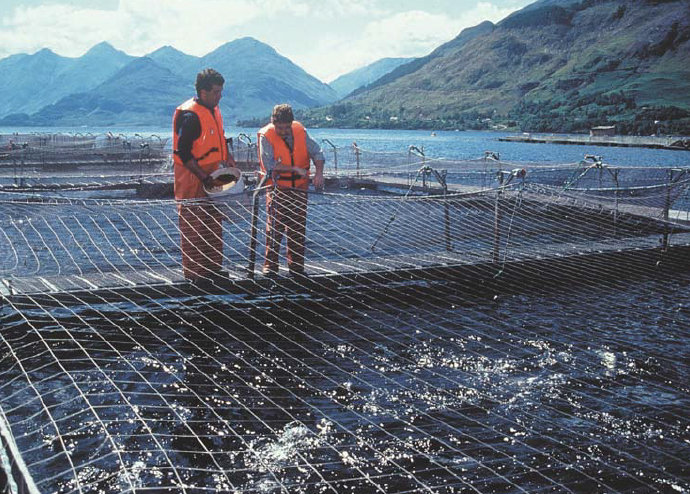
Aquafeeds
Meta-analysis examines ingredient substitution for fishmeal in salmon, trout feeds
In a meta-analysis of 28 nutrition studies, the authors found limited possibilities for ingredient substitution for fishmeal in diets for salmon and trout.



